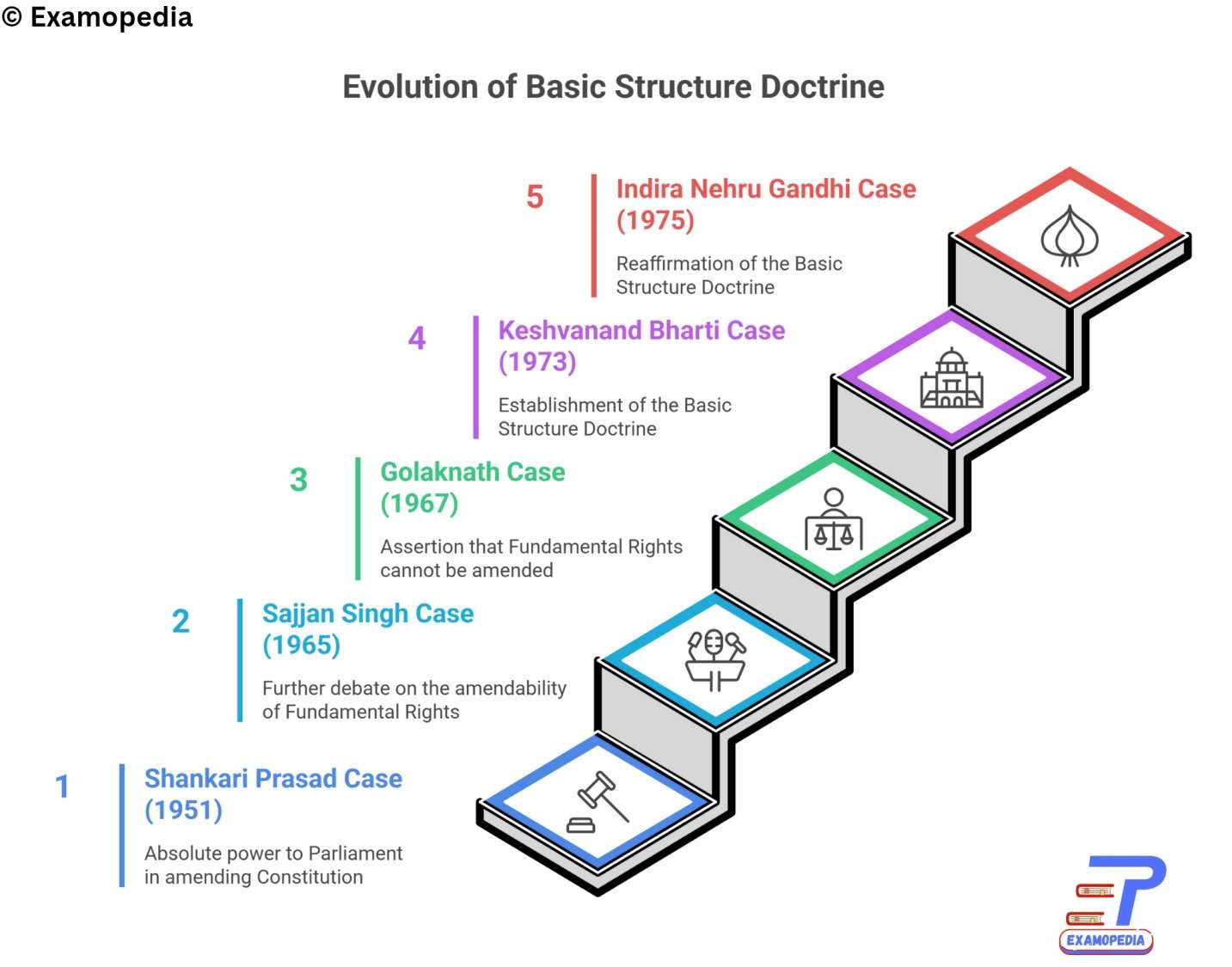1. Kesavananda Bharati v. the State of Kerala (1973) Verdict
2. Elements of Basic Structure Doctrine
3. Historical Background
4. Significance
5. Criticism
6. Conclusion

When I began my college journey, I often felt lost. Notes were scattered, the internet was overflowing with content, yet nothing truly matched the needs of university exams. I remember the frustration of not knowing what to study, or even where to begin.
That struggle inspired me to create Examopedia—because students deserve clarity, structure, and reliable notes tailored to their exams.
Our vision is simple: to make learning accessible, reliable, and stress-free, so no student has to face the same confusion I once did. Here, we turn complex theories into easy, exam-ready notes, examples, scholars, and flashcards—all in one place.
Built by students, for students, Examopedia grows with your feedback. Because this isn’t just a platform—it’s a promise that you’ll never feel alone in your exam journey.
— Founder, Examopedia
Always Yours ♥!
Harshit Sharma

Give Your Feedback!!
Topic – Basic Structure Doctrine (Notes)
Subject – Political Science
(Constitution of India)
Table of Contents
Basic structure doctrine is a legal doctrine that the Constitution of a sovereign state has certain characteristics that cannot be erased by its legislature. It was developed by the Supreme Court of India in a series of constitutional law cases in the 1960s and 1970s that culminated in Kesavananda Bharati v. State of Kerala(1973) where the doctrine was formally adopted.The rationale is the brute majority of parliament does not override the foundational principles of the Constitution.
Kesavananda Bharati v. the State of Kerala (1973) Verdict
- It upheld the validity of the 24th Amendment Act and stated that Parliament is empowered to abridge or take away any of the Fundamental Rights.
- At the same time, it laid down a new doctrine of the basic structure (basic features) of the Constitution and ruled that the constituent power of Parliament under Article 368 does not enable it to alter the basic structure of the Constitution. It meant that the Parliament cannot abridge or take away a Fundamental Right that forms a part of the ‘basic structure’ of the Constitution.
- The doctrine of the basic structure of the constitution was reaffirmed and applied by the Supreme Court in the Indira Nehru Gandhi case (1975) which invalidated a provision of the 39th Amendment Act (1975) that kept the election disputes involving the Prime Minister and the Speaker of Lok Sabha outside the jurisdiction of all courts.
- Again, the Parliament reacted to the doctrine of the basic structure by enacting the 42nd Amendment Act (1976) which amended Article 368 and declared that there is no limitation on the constituent power of Parliament and no amendment can be questioned in any court on any ground including that of the contravention of any of the Fundamental Rights.
- The Supreme Court in the Minerva Mills case (1980) invalidated this provision as it excluded judicial review which is a ‘basic feature’ of the Constitution.

Constitution of India Membership Required
You must be a Constitution of India member to access this content.
